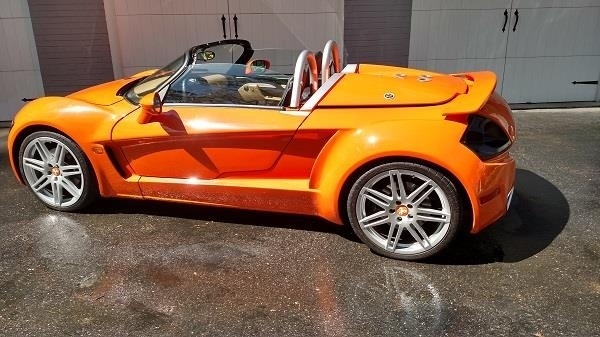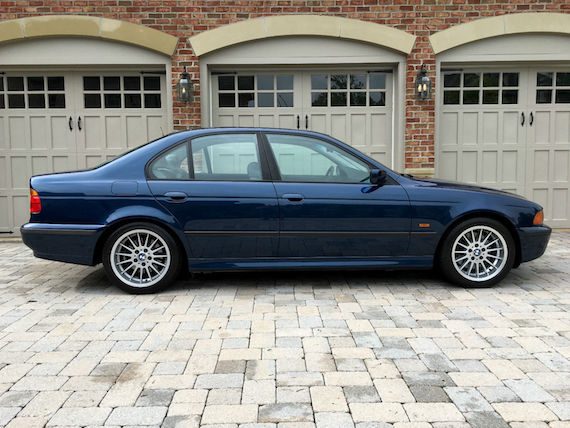Many enthusiasts – this author and, in general, all of the writers at GCFSB included – complain that cars have gotten too complex, too heavy, too isolating. An increasing reliance on computer controls to save poor driving skills and reign in huge horsepower certainly produces impressive numbers on the track. But, somehow the charts of ‘Ring lap times, superbike-embarassing 0-60 times and dyno numbers has taken an important aspect out of driving – the driver. However, at the same time that there has been an explosion of horsepower numbers and proliferation of computer controls, there has been a backlash of simple, enjoyable cars to drive. Models like the Elise proved you didn’t need a 10 cam, quad turbocharged V20 to go fast. Utilizing a relatively cheap and reliable inline-4 and adding lightness, the Elise takes the electronics out and relies on you paying attention to everything that is going on in the car to go fast – yet, fast it goes. Similar cars like the Ariel Atom, Opel Speedster/VX220, BAC Mono and, yes, even the Mazda Miata have followed the same recipe. But we’ve got one today I’m betting you probably have never heard of in the YES! Roadster Turbo. As the engineers from Lotus did, the team of Funke and Will from YES! took some proven parts from the Volkswagen and Audi catalogue and dropped them into the middle of an aluminum frame, added some spice and styling that channeled the Audi TT, Opel Speedster, Lotus Elise, the Spyker C8 and a little Lamborghini inspiration and produced one cool little package:
Tag: 6 speed
The perfect counterpoint to the pristine Golf Cabriolet from earlier is this E85 M Roadster. Now, the M Roadster – in either guise – is not the favorite German convertible, nor is it the favorite M product. Heck, we barely have ever covered the model, either – I wrote one up 3 years ago, but this may be only the second time we’ve looked at an E85 M Roadster. Critics detest the Bangle-era styling among other things, and some will point out it wasn’t even built in Germany, as the final assembly point was the Spartanburg plant in South Carolina. Excuse that for a moment and let’s consider that the E85 M might be one of the best values going in the used performance BMW market. There’s the classic Roadster recipe; two seats, front engine, rear drive. There’s the legendary S54 inline-6 under the hood, and it’s mated to a 6-speed manual. They’re rare, too as they ran only two years with some 3,041 sold in the U.S., which makes it one of the least frequently seen Ms. While not a market darling at the moment, it wasn’t terribly long ago that buyers ignored the E36/7 so there’s a reasonable expectation that they’ll appreciate. Pick up one in a great color and with low miles and it’s just about a sure bet:
CLICK FOR DETAILS: 2006 BMW M Roadster on eBay
Comments closedIn 2007, Audi fans had a giant reason to celebrate. No, they weren’t jumping for joy because their insurance company finally sent them their check for their B5 S4 that was stolen for the fourth time. Audi was bringing back the RS4. Even better, it was coming to North America. After taking a sabbatical in the B6 generation, the legendary RS4 was coming. 6-speed manual. 420-hp direct-injection V8. 8000 rpm redline. 58/42-percent front-to-rear weight distribution. Flared fenders. Honeycomb grille. This was it. Carbon-buildup be damned and yeah, it wasn’t the avant. This was it. Finally the AWD super-sedan was coming. Nine years later if you are still dreaming about the RS4 without the nearly $70,000 price tag, this example in Michigan might be right up your alley.
CLICK FOR DETAILS:Â 2007 Audi RS4 on eBay
9 CommentsVolkswagen is really great at theory, but not so much at execution. They’ve had a long line of really strange marketing decisions which have at times left the company in dire straights. One wonders how Volkswagen will emerge in the wake of the recent diesel scandal, for example, though many other manufacturers like Mitsubishi (you forgot they still made cars, didn’t you? Me too.) are doing their best to usurp VW’s crown as a manufacturing pariah. Yet, Volkswagen has so many debacles it has run its customers through that it should be amazing they come back for more at all. In the early 1990s, they mis-rated the timing belt service intervals on the early V8 quattros. The result was, predictably, a bunch of engine replacements. The 1.8T became notorious for turbo sludge problems, too – rectified with larger filters and synthetic-only oil, but a fair number (including my Passat) had factory turbo replacement. The 3.0 V6? A timebomb of metal shards working their way from the passenger rear of the motor through the engine, thanks to what appears to be an oil starvation design flaw. The 2.7Ts, 4.2s and all of the FSi motors? Known issues, sometimes very large and expensive. Coil packs, unnecessarily complicated PSV systems, transmissions made of glass and clogging sunroof channels? All the norm in your VAG experience. But Volkswagen really outdid themselves by making a complicated system even more complicated when they introduced the 4.0 W8 into the Passat. Sure, it was a test bed for later W12 models, and viewed in that light it makes some sense. But then, the Passat shown here is much more rare than the Bentleys and even some of the A8 W12 models that derived experience from the B5.5. Volkswagen could simply have taken any one of their proven engines and provided the answer to whatever question they were posing when they conceived this vehicle. Instead, they did things differently. That’s both something to celebrate and something to point out as an inherent character flaw:









